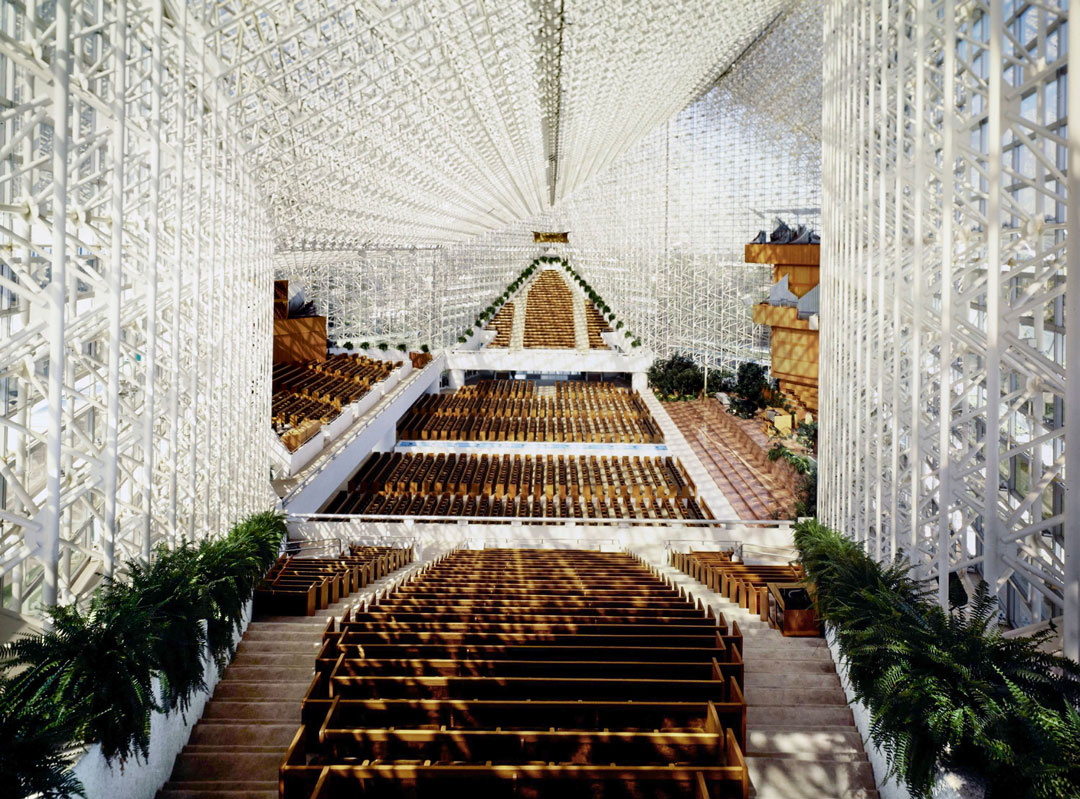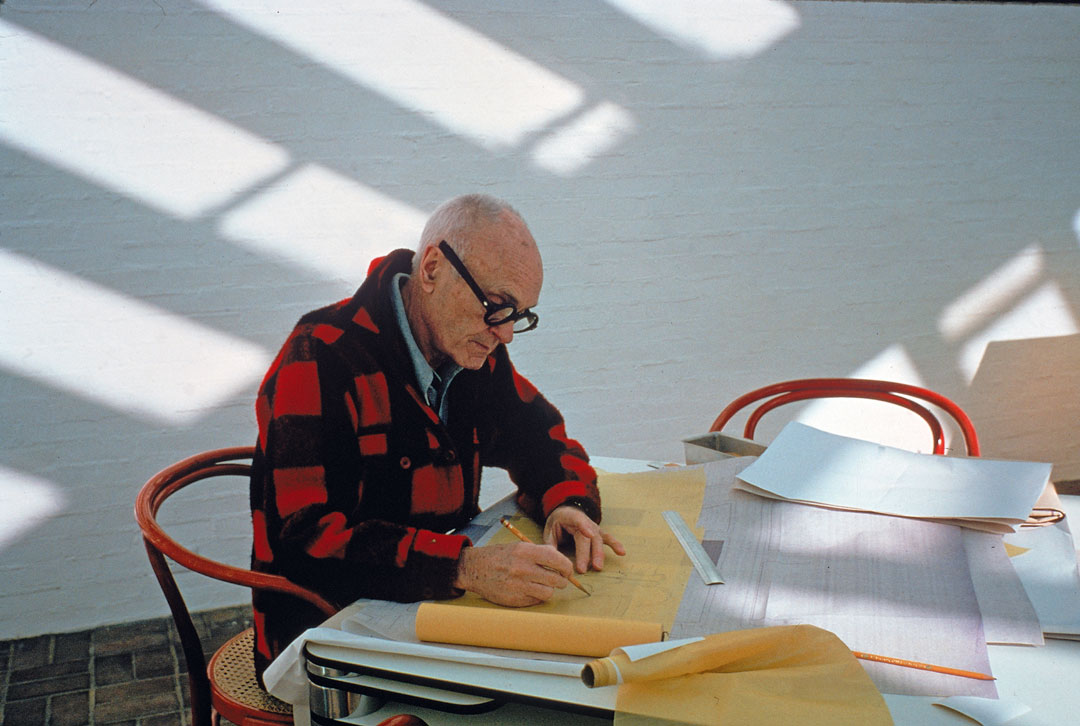
Philip Johnson’s religious side
Our new book highlights the American architect’s surprising enthusiasm for houses of worship
Philip Johnson wasn’t an obvious designer of the houses of god. The great American architect was gay, and was no great church goer. Even in the 1990s, clients such as Joseph McFadden, the President of the University of St Thomas in Houston, had to fight back objections to Johnson designing the campus’s Chapel of St. Basil, levelled by pious stakeholders, who disliked “an atheist” working on such a project.
Nevertheless, if the worshipful religious didn’t appreciate him, Johnson certainly learned to love working on places of worship from the mid-twentieth century onwards, as author Ian Volner explains in our new book, Philip Johnson: A Visual Biography.

“Religious buildings would become a key component of Philip’s practice, an opportunity for him to exercise his more grandiose impulses,” writes Volner. “With the Roofless Church, commissioned by oil baroness Jane Blaffer Owen, Philip cast off right angles and embraced the parabolic and the Baroque, as well as the context of rural Indiana. The design expressed ‘the softness of our countryside,’ his client remarked. Sheltering a Jacques Lipchitz sculpture, the slate-clad baldachin (the canopy over the altar) riffed on exactly the kind of ‘ballet-classicism,’ as British critic Marcus Whiffen termed it, that Philip had previously derided.” This demure 1960 creation stands in contrast to the great 1980 Crystal Cathedral, a ‘machine for praying in’, as Volner writes.
“Philip went for sensation: a gleaming greenhouse, with echoes of the pioneering 1851 Crystal Palace in London, would be joined a few years later by a spiky tower, also glass clad and even more explicitly historicist in character,” the author writes. “As extravagant as the design seemed, it suited the client’s philosophy.”

The client in this case was the televangelist and motivational speaker Robert Schuller, who had originally preached in parking lots, and maintained “a roof that comes between your eyeball and the infinity of space limits your capacity for creative imagination.”
Johnson took the design note with ease, and, indeed, he wasn’t too fussy when it came to religious creed either. His synagogue in Port Chester, New York, created in 1956 “was generally considered a success—even if some of the members found its narrow windows to be alarmingly prison-like.”
You can judge for yourself in our new book; order a copy of Philip Johnson: A Visual Biography, here.